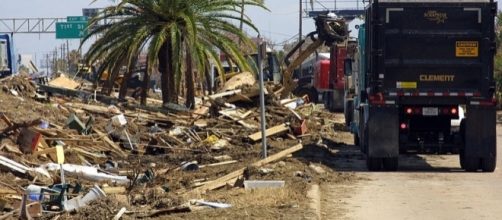Two Hurricanes wreaked havoc on the United States within a span of a few days. First, it was Hurricane Harvey that struck Texas followed by Hurricane Irma that targeted Florida. There were reports of loss of lives and hundreds of houses were destroyed while trees were uprooted and blocked roads.
The hurricanes have gone, but there is no respite for the administration. The debris has to be cleared to bring back normalcy. The volume of garbage to be cleared runs into millions of tons and will take nearly half a billion dollars to remove from the landscape.
Tentative plan to remove the garbage
Fox News reports that President Donald Trump and Gov. Greg Abbott want the situation to return to normal as soon as possible. The services departments of the United States will be put to the test to clear the garbage before another such disaster strikes.
It was estimated that Hurricane Harvey damaged 126,000 homes in the Houston region through a combination of floods, rain, and tornado. The garbage is spread all over the town and consists of a wide variety of items. This was revealed by Harry Hayes, director of the Solid Waste Management Department for the city of Houston. He indicated that the removal would be a time-bound program and must be completed by Dec.
31.
A tentative plan has been drawn up to mobilize a large number of trucks to cart away the debris that consists of twisted, shattered and waterlogged remains that used to belong to the residents. The administration pins its hopes on construction and demolition companies who would be better equipped to undertake activities of this nature.
The volume of debris in the city limits of Miami is estimated at 1 million cubic yards and will take four to six months to clean up. The debris here consists of trees, fences and outdoor items compared to household and construction items of Texas.
Disposal of the garbage
The garbage generated by the twin hurricanes will follow the standard disposal procedure.
The municipalities will offload the waste at temporary federal transfer stations where sorting will be done to ensure that there is no mix-up of hazardous waste. These cannot be dumped in regulated landfills but are to be sent to hazardous waste treatment centers. Metallic items will be shifted to recycling facilities and the remaining items will be sent to landfills for further action.
The United States will be paying a very heavy price of nearly half-a-billion dollars to remove the garbage and bring the cities back to normal. It will be a long drawn out process and by the time normalcy is restored, another natural disaster could strike.


